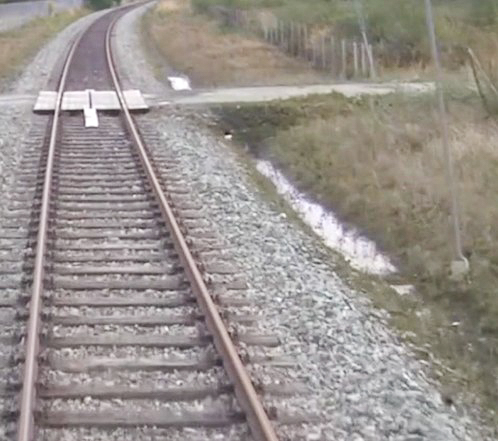Autonomous train operations with image analysis and machine learning (Europe’s Rail)
- Department Image analysis, machine learning and Earth observation
- Fields involved Image analysis
- Industries involved Community, Technology and industry
Europe’s Rail is the largest research and innovation initiative in railway history. The project brings together researchers and railway stakeholders from across Europe to develop new technologies for the railway systems of the future. With the Norwegian Railway Directorate as national coordinator, NR is part of the Norwegian team, applying image analysis and artificial intelligence (AI) to develop advanced solutions for autonomous train operation.

A joint effort for European railways
Europe’s Rail is the EU’s flagship railway initiative and encompasses several subprojects aimed at addressing various needs in future train operations across the continent. The project is a collaboration between the railway industry and various research communities across Europe and is the largest innovation initiative in the sector’s history. Norway’s participation is coordinated by the Norwegian Railway Directorate and includes a number of partners from both research and industry.
NR is part of the subproject Rail to Digital automated up to autonomous train operation, which aims to develop solutions for driverless trains. Our work focuses on image analysis, which is a key component in enabling safe and autonomous train operations.
Monitoring water levels with camera technology and machine learning
To ensure safe railway operations during flooding and heavy rainfall, NR is developing methods monitoring water levels along the tracks. When water reaches critical levels, trains must reduce speed or come to a complete stop to avoid accidents. This can result in delays and cancellations.
We collect and analyse image data from trains equipped with cameras to identify areas with poor drainage and to track how water levels change over time. This approach is methodologically demanding, as the system must be able to detect both water and relevant infrastructure, and combine observations from different times and departures.
Our models are designed to identify bodies of water near the tracks and compare images with earlier observations, allowing us to identify rising water levels before they pose a threat to traffic.
An AI-based foundation model for Norway’s railway system
As part of our contribution to the project, we are developing an AI-based foundation model for image and video data of the Norwegian railway. These models are trained on large volumes of unlabelled data using self-supervised learning, and they learn to recognise normal conditions on and around the tracks.
A foundation model can quickly be adapted to new tasks, such as flood detection, with significantly less need for labelled training data. This enables greater flexibility and provides a more efficient starting point for further development.
To learn more about this project, please contact:
Project: Europe’s Rail
Partners: The Norwegian Railway Directorate, NORCE, Bane NOR, Vy and many more
Funding: Horizon Europe
Period: 2022 – 2026
Other resources:
FP2-R2DATO – external website
